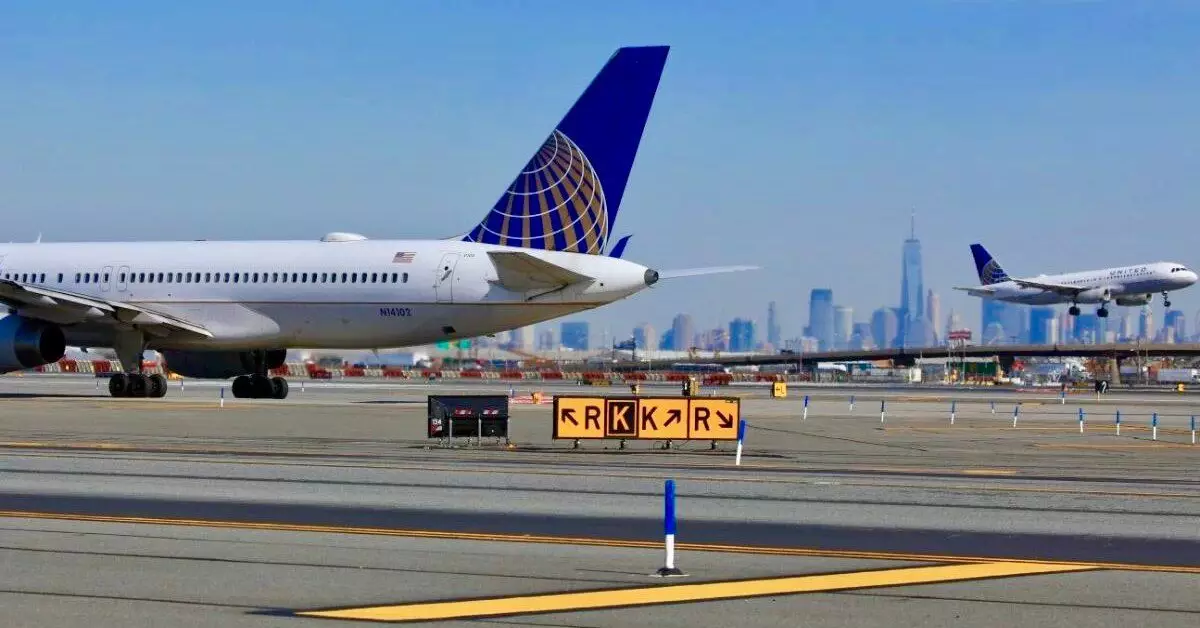Recent incidents at Newark Airport highlight critical deficiencies within the air traffic control system in the United States. On two occasions within a short span, air traffic controllers lost radar access, creating a ripple effect of cancellations and delays that impact countless travelers. On the morning of a routine Friday, radar equipment went dark for 90 seconds, prompting the Federal Aviation Administration (FAA) to impose traffic restrictions for safety. This wasn’t a freak accident; it mirrored a similar radar failure just weeks prior, underscoring a troubling pattern that demands urgent attention.
The immediate repercussions of these outages are severe—57 flights were canceled in just one day following the latest incident, with nearly 300 additional delays reported. Over one week, Newark Airport experienced more than 1,700 cancellations and delays. Such logistical nightmares not only frustrate travelers but also threaten the economic vitality of the region. The interconnectedness of air travel to commerce and trade cannot be overstated, and to witness this chaos repeatedly signals a glaring failure in management and foresight.
The Underlying Issues: Staffing Shortages and Ancient Technology
New Jersey Representative Josh Gottheimer has been vocal about what he described as a crisis stemming from inadequate staffing and obsolete technology. With only 22 controllers on duty, far below the 60 that are necessary, it’s evident that the support systems for these operations are crumbling. Coupled with reliance on outdated copper wiring—technology that harks from the ’80s—this situation becomes unsettling. Critics argue that the air traffic control tower resembles a time capsule from the Brady Bunch era, and it’s apparent that this antiquated infrastructure is ill-suited for the demands of contemporary air travel.
The FAA has committed to installing new fiber-optic data lines, but the speed and efficacy of these enhancements remain questionable. How quickly can the powers that be act to replace outdated systems? Alarming incidents like these should not be seen as isolated events; they are symptomatic of a much larger technological malaise. Does our country truly value its airspace and the millions who traverse it, or is it merely resigned to dealing with crises as they emerge?
Government’s Role in the Transformation of Air Travel
In response to the strife faced by air traffic controllers and passengers alike, Transportation Secretary Sean Duffy has unveiled a multibillion-dollar initiative designed to overhaul the nation’s air traffic control framework. This ambitious plan aims to modernize the antiquated system, incorporating 4,600 high-speed connections and replacing 618 radars across the country. While the initiative is a step in the right direction, the timetable and concrete results remain matters of concern. As the nation stands at a pivotal juncture in the realm of aviation, there is a pressing need to prioritize safety over complacency.
Furthermore, the tragic midair collision in January that resulted in 67 innocent lives lost serves as a chilling reminder of the stakes involved. Failed systems can have irrevocable consequences. This catastrophe, alongside several other crashes this year, has awakened officials to the need for immediate, transformative action. However, the shadow of uncertainty looms over the National Transportation Safety Board’s investigations, which have yet to definitively connect such failures to the air traffic control realm. This ambiguity raises questions about what steps need to be taken to prevent similar tragedies in the future.
Crisis as Catalyst: A Call to Action
The current crises at Newark Airport reveal a dire situation that extends beyond mere inconvenience for travelers; it paints a vivid picture of systemic failure and lack of innovation. The time for talking is over; action is now requisite. The commitment to modernizing air traffic control must not just be a theoretical exercise but a reality that is promptly and decisively enacted. Given the sheer scale of human lives and economic impact at stake, our leaders must act to ensure that technology keeps pace with the demands of air travel.
Only through decisive action to bolster staffing and update technology can we ensure our airways remain safe, efficient, and adaptable to future challenges. The sky should not be tainted with fear of radar failure; it should be a realm of possibility and connection, bridging distances and enriching lives. In a world that relies increasingly on air travel, the stakes have never been higher. The time for change is now.

